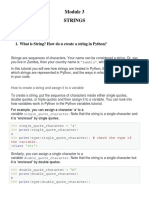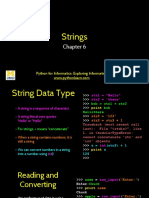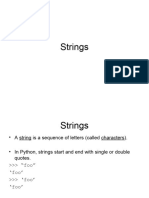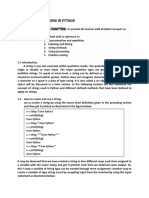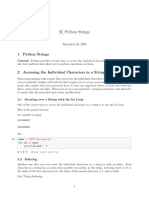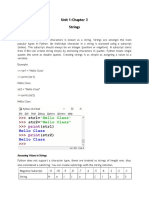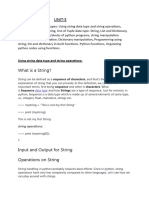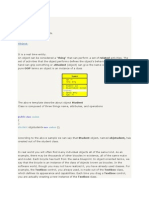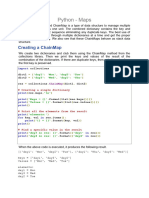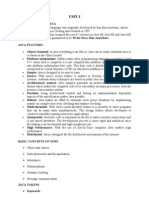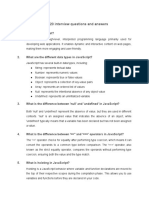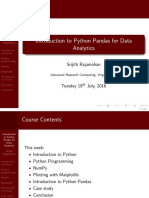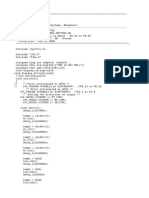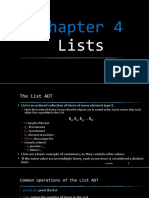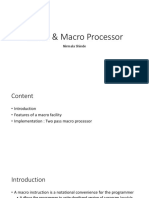0% found this document useful (0 votes)
38 views14 pagesUnit
Unit 2 covers the structure and manipulation of strings in Python, including string creation, subscript operators, slicing, and common string functions. It also introduces exception handling, including try-except blocks, and custom exceptions. Additionally, the unit discusses lambda functions as a way to create anonymous functions in Python.
Uploaded by
mukilap6Copyright
© © All Rights Reserved
We take content rights seriously. If you suspect this is your content, claim it here.
Available Formats
Download as PDF, TXT or read online on Scribd
0% found this document useful (0 votes)
38 views14 pagesUnit
Unit 2 covers the structure and manipulation of strings in Python, including string creation, subscript operators, slicing, and common string functions. It also introduces exception handling, including try-except blocks, and custom exceptions. Additionally, the unit discusses lambda functions as a way to create anonymous functions in Python.
Uploaded by
mukilap6Copyright
© © All Rights Reserved
We take content rights seriously. If you suspect this is your content, claim it here.
Available Formats
Download as PDF, TXT or read online on Scribd
/ 14











